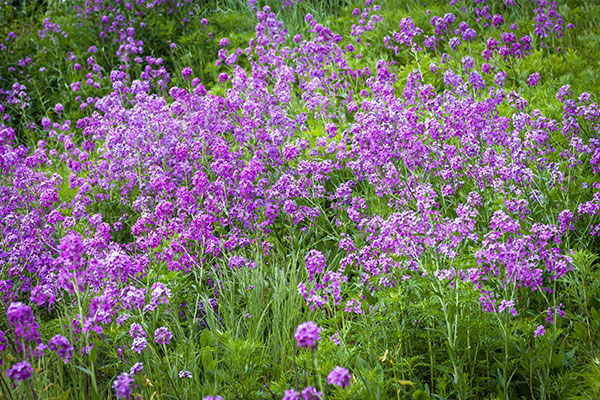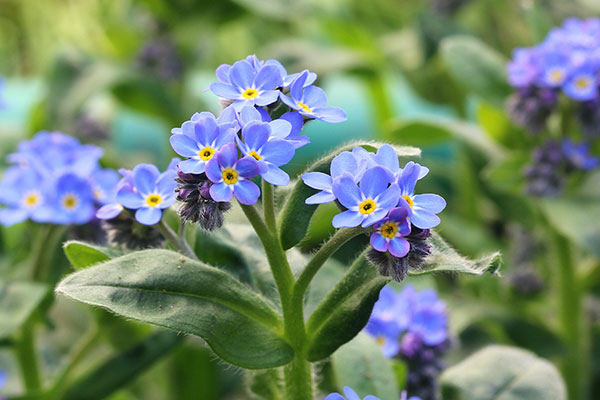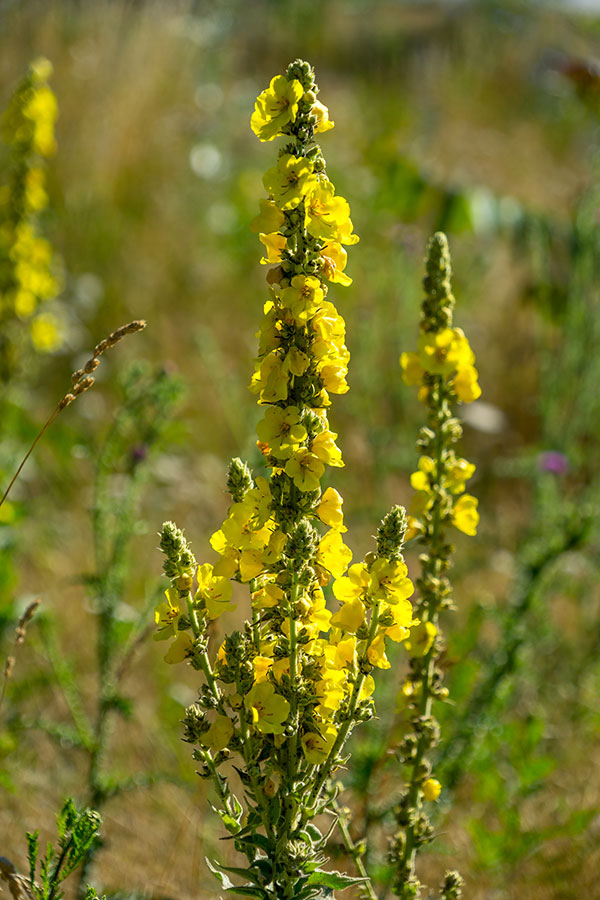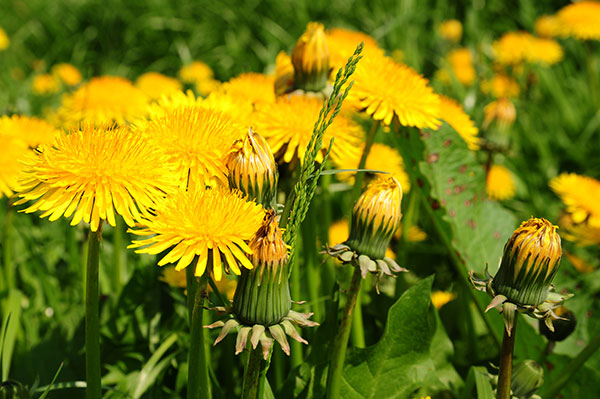binomial nomenclature
common name
Hesperis matronalis
Dame's Violet
General characteristics
It is spontaneously spread along the edges of hilly roads, in rough fields and in humid woods from 0 to 1,200 m a.s.l. Perennial or biennial fast-growing herbaceous plant that in full vegetative development exceeds 90 cm in height. The violet flowers, send out an intense smell, especially in the afternoon and in the evening.
Flowering period
May - July
Cultivation
Seeds are planted in summer, seedlings in autumn. In order to produce many flowers, it should be cultivated in sunny areas. It fears the dry soil and is very durable to temperatures up to -20º. It must be grown in the open ground, the water supply provided by the rain is enough, but sometimes it is to be watered during the vegetative period, from March to October.
Connection with the fauna
Pollination by bees and butterflies.

binomial nomenclature
common name
Veronica longifolia
Veronica
General characteristics
It’s a rather variable genus, that can be found in nature in many different habitats: from marshy areas to mountain meadows. Perennial herbaceous plant, native to Europe and Asia, it develops compact tufts, formed by thin stems. The violet-blue flowers, united in long corns tall up to 25-40 cm, bloom at the apex of the stems.
Flowering period
June – October, depending on the species
Cultivation
Planting takes place in spring. Exposure should be in full sun at major latitudes and altitudes, while in mid-shade where the climate is warmer. It prefers the cold to the dry heat, it needs a rich soil, quite humid and well drained.
Connection with the fauna
It produces nectar in abundance, frequented by bees, bumblebees, butterflies and beetles.

binomial nomenclature
common name
Myosotis sylvatica
Forget-me-nots
General characteristics
The genus includes about fifty species, mostly native to Europe and Asia, even if it is however a cosmopolitan plant. Rustic perennial plant, naturally present in the meadows, along the waterways and in the mountain clearings. About 30 cm tall, it’s a shrubby plant. The flowers, depending on the species, range from blue to pink to white with yellow centre.
Flowering period
April - September
Cultivation
The sowing must be done in September, while the planting of the seedling must be done in spring. It is a rustic plant that adapts to any type of soil, prefers damp but well drained soils, likes sunny places, protected from the wind.
Connection with the fauna
Pollination by bees and butterflies.

binomial nomenclature
common name
Verbascum thapsus
Mullein
General characteristics
Perennial or biennial herbaceous plant, is able to grow in a large variety of habitats due to its great genetic differentiation. This plant initially makes a thick carpet of leaves at ground level and then from it rises a tall flowering stem, which can reach 85 cm. The flowers are yellow with orange anthers, but other species have red, purple, blue and violet.
Flowering period
From late spring to autumn
Cultivation
It is sown in spring, while planting must be done in autumn or spring. Rustic plant, prefers a quite sunny exposure or in half shade, it bears well the cold and the drought too. It needs humid but well drained soil.
Connection with the fauna
The flowers are much appreciated by the bees and are structurally developed to promote the connection of the ligula.

binomial nomenclature
common name
Taraxacum officinale
Common dandelion
General characteristics
Cosmopolitan perennial herbaceous plant, available from the flat areas up to about 2,000 meters, grows up to 30 cm. The flowers, typical of the Asteraceae, are composed of yellow-gold ligulae and are sustained by long stems from which comes out a white liquid. The fruits are oblanceoloid and linked to a pappus, a modified calyx in shape of an umbrella that allows the transport of its bristles by the wind.
Flowering period
April - September
Cultivation
Its seeding is possible from March to June. Rustic species, at ease in a well sunny area. Although not needing much water, it benefits from frequent irrigations. The soil should be rich in organic matter.
Connection with the fauna
Its golden florets heads are among the most loved by bees.
